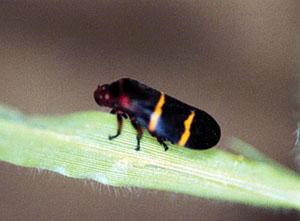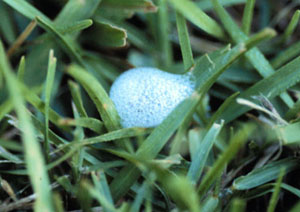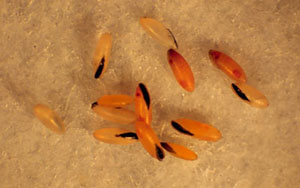Spittlebugs




Identification
Spittlebug adults, commonly called froghoppers, are about 3/8 inch long, dark brown or black, and have two orange stripes across their wings. The nymph is ivory-colored with a brown head. Nymphs live inside masses of spittle or froth, hence the name "spittlebug". They occur throughout Georgia.
Life Cycle and Biology
Adult females deposit orange eggs in bits of hollow stems and other debris. Nymphs hatch in about two weeks and begin to feed immediately by sucking juices from the grass. They cover themselves with a frothy mass know as spittle. There may be one or several nymphs in each spittle mass. The masses are found from just below the soil surface to a few inches above it. Two generations occur annually in Georgia. Overwintering eggs hatch in March and April. This generation reaches maturity by June. Adult activity is also noticeable in August and September, when the second generation matures.
Damage
Spittlebugs are associated with heavy thatch. A heavily infested area will feel "squishy" when you walk across it due to numerous spittle masses. Centipede grass is especially prone to spittlebug infestation; zoysia, bermudagrass, and bahiagrass also are susceptible. Populations often begin and increase in shady areas. The second generation appears to cause more injury. Populations, and therefore, damage, can be especially high during years with high spring and summer rainfall.
Control Strategies
Don't allow a heavy thatch layer to accumulate. Adult spittlebugs feed on a number of shrubs and other plants, so avoid locating host plants that attract the adults, especially Japanese holly, ear susceptible turfgrasses. Time insecticide treatment in heavily infested areas for July. Mow and irrigate the grass several hours before applying treatment late in the day.
